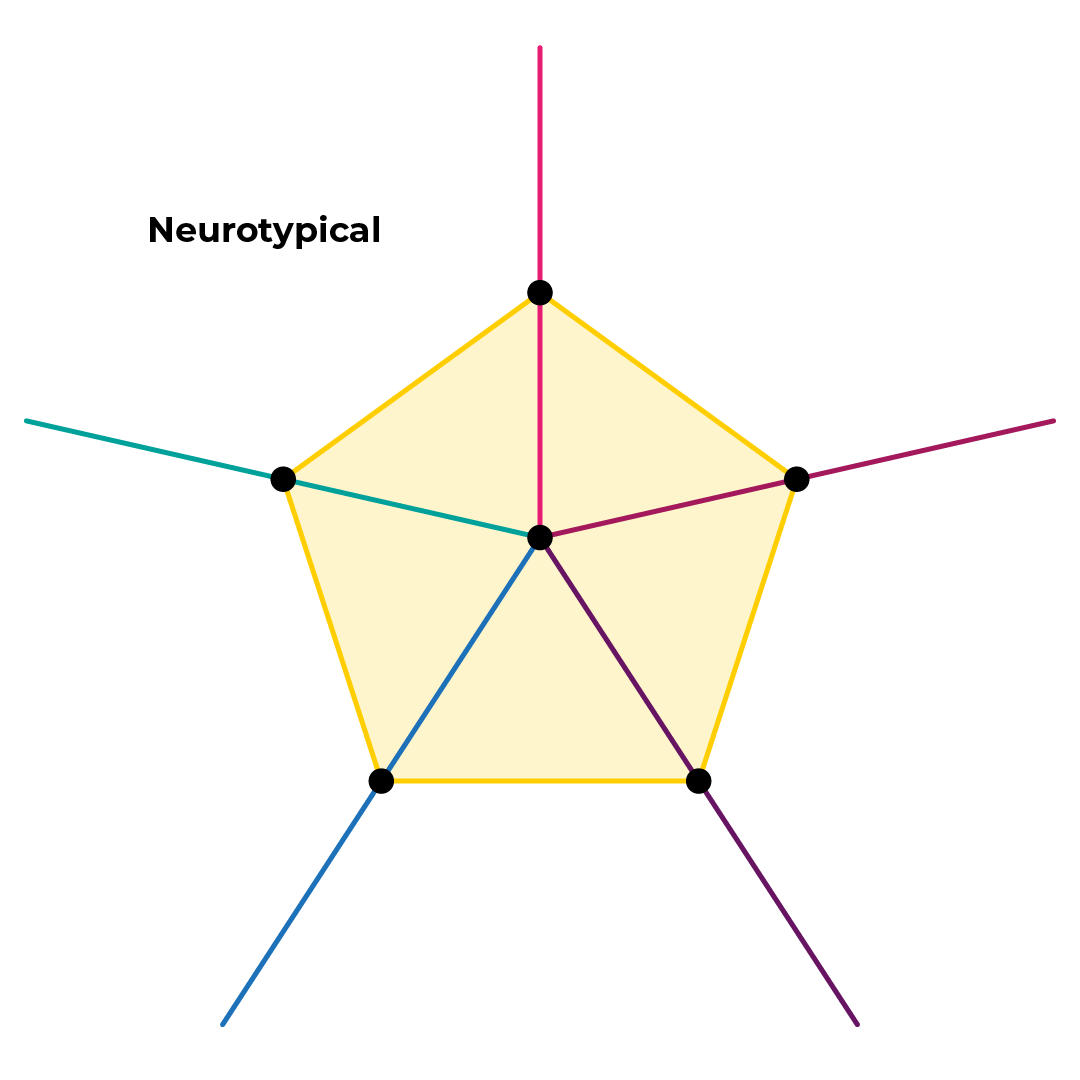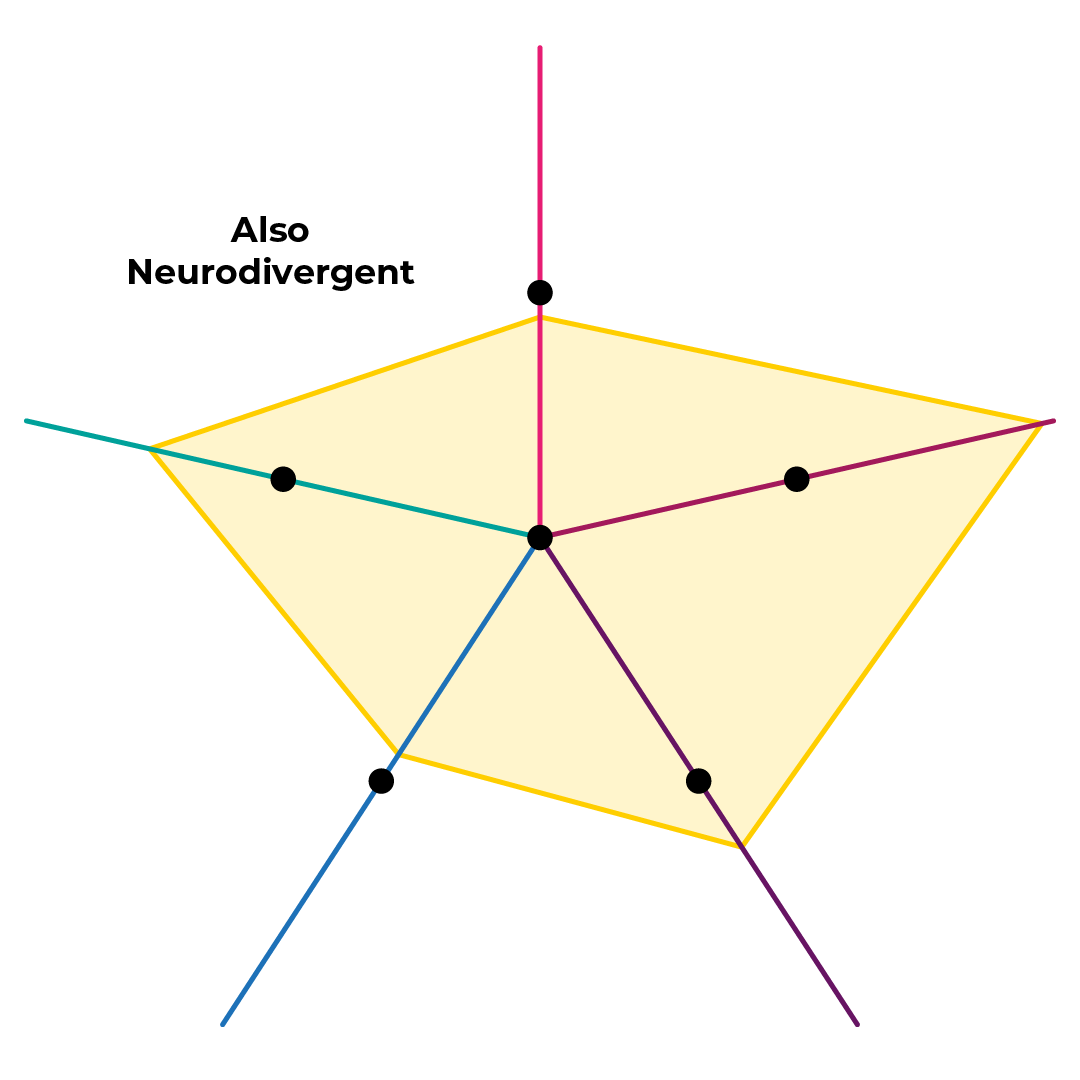How do you accommodate the neurodivergent?

What is neurodivergence?
The simplest way to describe someone who is neurodivergent (or ND) is that their brain works differently to what would be considered ‘typical’. Evident in neurological disorders such as autism and ADHD, a neurodivergent person might see things differently to others, or might struggle to do things in the same way. Conversely, this person might excel at things that a neurotypical person wouldn’t. For example, this person may find it difficult to glean subtext in conversation, but exhibit a higher-than-average ability to remember what was said (or vice versa).
What’s important to understand about neurodivergence generally is that it is not the same as mental illness. While being neurodivergent comes with an increased likelihood of experiencing mental health issues, this is largely and usually due to the challenges an ND person faces navigating a world that was designed for neurotypical (or NT) people. As put by Ellie Middleton, autistic and ADHD creator and author of UNMASKED: The Ultimate Guide to ADHD, Autism and Neurodivergence, it’s like being a Mac user in an office that only works on Windows computers – your laptop isn’t broken, it simply has a different operating system to everyone else. You just need systems and programs that were designed for you.
What do neurodivergent people need?
This, unfortunately, is a very difficult question to answer. This is because neurodivergence covers an extremely wide area. There’s a misconception about what people refer to as “the spectrum”, the implication being that someone is either on it or not, and if they are, they’re at one point along a linear scale like this:

In reality, a better graphic representation would look closer to the following.
 |
 |
 |
Here, the different lines represent different characteristics such as, for example, organisation, social skills or sensory sensitivity. We’ve left the axes unlabelled as this graph still isn’t a totally accurate representation – it simply demonstrates that neurodivergence isn’t one-dimensional, that what works for one person might be extremely uncomfortable for another. It also shows that unless a person perfectly hits all the midpoints on all the traits, we’re all “on the spectrum” in one way or another. Qualifying as neurodivergent is just a matter of how far the points of our pentagons stray from the centres of the lines.
So, if you can’t pin down something that works for everyone, how can you effectively help anyone?
Flexibility, Clarity and Curiosity
Flexibility
The best way to accommodate for the myriad ways in which neurodivergent people might prefer to work is to give them the freedom to decide themselves. You should have a wide range of options available for people to use if and when they need them. This might include:
- Standing desks – for those who struggle to focus when sitting down
- Quiet rooms/Noise cancelling headphones – for when things get too loud in the office and someone with sensory issues becomes overstimulated
- Flexible hours – for those whose motivation strikes at different times
- Screen readers – for people who have trouble reading long sections of text due to dyslexia or other issues
Don’t just offer these things exclusively for neurodivergent people. For one thing, someone who is ND might not want to disclose it to the business, either out of embarrassment or fear of being treated differently (one more reason to foster a culture of inclusivity). For another, neurotypical people can benefit from these things too, if not necessarily as much as others.
Clarity
As mentioned earlier in this article, a common problem experienced by neurodivergent people – those with autism in particular – is a certain difficulty with subtext. For a neurotypical person, if your manager were casually to ask you at 14:55 “Can I talk to you for a minute?”, you would assume they were asking if you were generally free for an impromptu meeting to discuss a small issue. If you had an important client call at 15:00, you’d probably mention it and ask if you could talk later.
A neurodivergent person, however, might take the question literally and say yes, choosing not to tell their manager about the 15:00 call because, well, the conversation will be done by 14:56. When that conversation lasts more than 5 minutes, the manager might be irritated when the employee cuts the meeting short to go and have the call. Ultimately, however, it was the manager that didn’t communicate clearly how long they expected the meeting to last.
Situations like this are why clear communication is necessary when working with ND people. Managers must set out defined expectations, timelines and priorities so that there is no room for misinterpretation. Of course, this doesn’t only help the neurodivergent – clear and direct communication will do wonders for any team – but once you really examine the language you use, you’ll realise there are a lot of vague statements and shorthand that you assume everyone will pick up on automatically. While most neurotypical people will understand you just fine, it can cause confusion, frustration and even distress to those who take things at face value and struggle to read between the lines.
Curiosity
Once your business has a range of common accommodations available and a line of clear communication and expectation, the final step is to ask your team what else they might need. It might seem like this should come first, but in truth, a neurodivergent person is likely to struggle to ask for accommodations if none are already available. For many, they’ve spent their lives being told by teachers, parents and friends that they do things strangely or incorrectly, and have an internalised feeling that they should just adapt to what everyone else does to fit in.
Once there are options available for your ND employees and they feel safe using them, they’ll feel more confident in telling you what else might help them. Again, extend these questions to your whole team, not just those who identify as neurodivergent. This is for the reasons we mentioned before, but also the last point we’d like to make…
Lots of people don’t know they’re neurodivergent
As discourse around neurodivergence has only recently become more mainstream, there are still plenty of people who are unfamiliar with the breadth of people the term covers. They might believe autism exclusively refers to someone who needs constant support and has limited or no verbal communication. They might picture someone with ADHD as a person who is always loud and disruptive with a severely limited attention span. Many of the people who think like this don’t realise that they themselves might qualify for a diagnosis if they were to go in for a consultation.
Shifting this perception takes education. The best education, like learning a language, is immersion. Creating a culture of inclusivity and transparency around neurodivergence means that your existing ND employees will feel safe to share their identities and experiences with those around them. In doing so, everyone learns what the terms actually mean in today’s society. You never know – you might hear someone ask, “Wait, doesn’t everyone do that?”


)
)
)
)
)
)
)
)